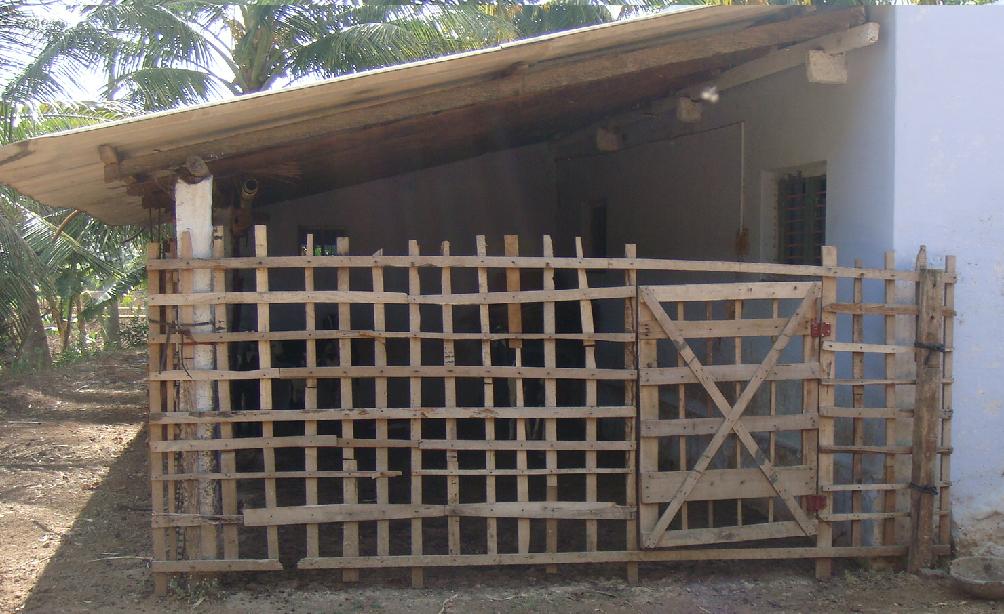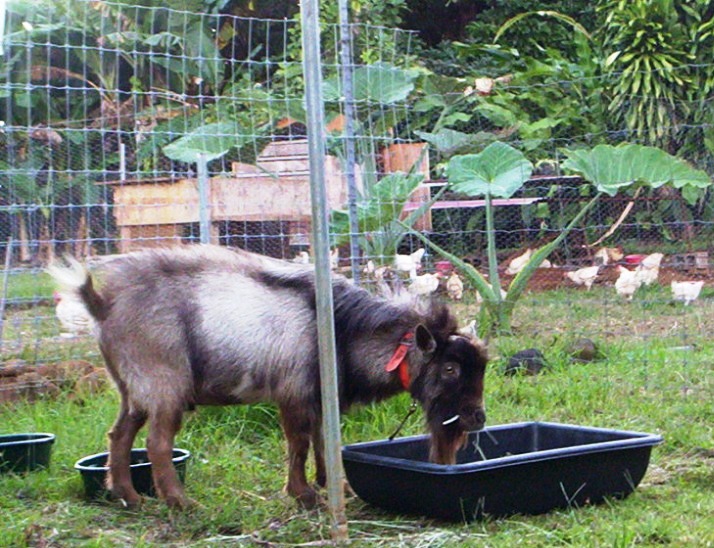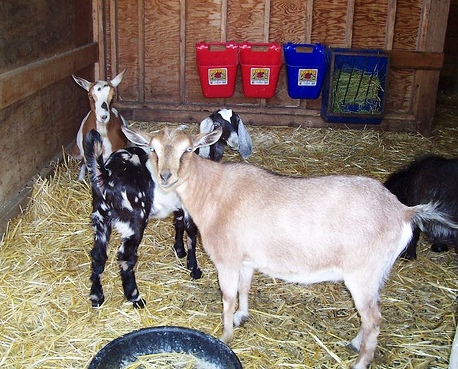 |
|||||||
| Major Activities |
Live Stock :: Goat :: Housing |
||||||
HOUSING Housing of goats is not a serious problem. It is enough if the goats are provided with a dry, comfortable, safe and secure place, free from worms, and affording protection from excessive heat and inclement weather. In Indian villages goats are mostly kept under widespread shady trees when the Climate is dry, provided the goats are safe from thieves and predatory animals such as wolves and panthers.
The kids are kept under large inverted baskets until they are old enough to run along with their mothers. Males and females are generally-kept together. It is worthwhile to design a cheap house for goats which may result in increased milk and meat production. Some kind of housing is necessary if herds of goats are maintained in cities and at organized farms; adequate space, proper ventilation, good drainage and plenty of light should be provided for while constructing houses. Successful goat dairying largely depends on the site where goats are kept. Goats do not thrive on marshy or swampy ground. Grazing areas should be free from pits and shallow pools, for goats contract parasitic infection mainly from such places. 'Lean-to' Type Shed The plan for a house varies with the climatic conditions and the type of flock to be sheltered. In dry climates with a rainfall of 50 to 75 cm a long shed open on the sides, little exposed to weather and built on well drained ground makes an excellent shelter. A goat, when reared singly, can be housed in any building provided it is dry, free from draft and well ventilated. The space allowed should be 1·8 m x 1·8 m. A plain board, 28 cm wide and 2·5 cm thick with two circular holes sufficiently large for receiving two small galvanized iron pails, may be used in place of the manger or a trough for food. It should be raised 50 to 60 cm from the floor, supported on wooden or iron brackets fixed to the wall. These pails, one for water and the other for food, are preferred to the manger, as the accumulated residue of feed can be easily removed from them. In the tropics because of high temperature, heavy rainfall and the susceptibility of goats-to parasitism, the most practical goat houses are those which are raised above the ground level, are well ventilated, and have long eaves to prevent heavy rain showers to splash in from the sides. The floor must be strong (wooden strips with small slits in between) and the roof material should provide effective insulation from the solar radiation. The roofing material would be made of bamboo or tree leaves or earthen tiles which are cheap and practical. Provision must be made for collection of dung and urine periodically.
Shelter for Buck
Space for Goats in Stanchions and Confinement Loose Stalls for Pregnant Does and Kids
Stall for Does and Kids Exercise Paddock for Stall-fed Goats Segregation Shed Hay Racks Tethering Elevated Platform In the tropics because of high temperature, heavy rainfall and the susceptibility of goats-to parasitism, the most practical goat houses are those which are raised above the ground level, are well ventilated, and have long eaves to prevent heavy rain showers to splash in from the sides. The floor must be strong (wooden strips with small slits in between) and the roof material should provide effective insulation from the solar radiation. The roofing material would be made of bamboo or tree leaves or earthen tiles which are cheap and practical. Provision must be made for collection of dung and urine periodically.
Elevated Platform Farming systemsTetheringIn this system goats are usually tied with a rope to a tree or on a peg and they will be able to browse from the surrounding. It is a convenient method from the standpoint of minimum labour input and utilization of feeds. This system is suitable for farmers with one or two goats. Extensive production Intensive productionThis method is suitable in urban areas where there is scarcity of land. In this method goats are confined exclusively in sheds and fed on leaves/grass and concentrates. Semi-intensiveThis method represents varying degrees of compromise between extensive and intensive production. In this system the goats are allowed to go out of the shed for a few hours daily. Integration with cropping system (Source: Dr.Achariya, Handbook of Animal Husbandry) |
|||||||
Technologies |
|||||||
Veterinary Services |
|||||||
| Home | Success Stories | Publication | Gallery | Forms | FAQs | Related Links | Contact | |
|||||||
| © All Rights Reserved. TNAU-2008. |
|||||||



